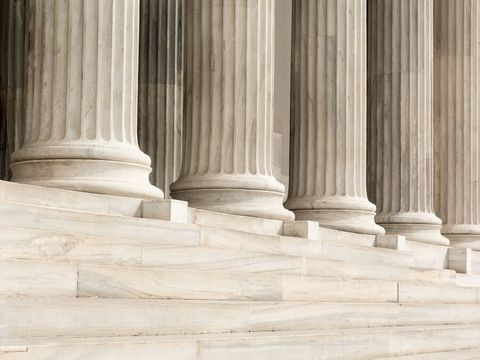Lucia’s Wake: Sixth Circuit Tosses Mine Safety Ruling By An Improperly Appointed Judge
Client Alert | 2 min read | 08.06.18
Last week, the U.S. Court of Appeals for the Sixth Circuit decided Jones Brothers, Inc. v. Secretary of Labor, a case concerning who has power to appoint administrative law judges (ALJs) for the Federal Mine Safety and Health Review Commission (Review Commission). Relying entirely on the United States Supreme Court’s recent decision in Lucia v. SEC, the Sixth Circuit held that, because the Review Commission ALJs hold “continuing office[s] established by law” and exercise “significant discretion when carrying out … important functions,” they are “Officers” of the United States for purposes of the federal Constitution’s Appointments Clause. For that reason, the Sixth Circuit explained, Review Commission ALJs may only be appointed by the President, a court of law, or the head of a department.
Historically, the Review Commission had delegated authority to appoint new ALJs to the Chief Administrative Law Judge. The court of appeals acknowledged with approval the fact that, since the Jones Brothers’ case had been heard, the presiding ALJ’s appointment had been ratified by the full Review Commission, i.e., the “head” of a department. Nonetheless, because, when she heard the Jones Brothers’ case, the ALJ had not yet been appointed in that manner, the Sixth Circuit vacated the underlying decision against Jones Brothers and remanded the matter for a fresh hearing before a different, properly appointed ALJ.
The Sixth Circuit’s Jones Brothers decision is significant for several reasons (not least of all its discussion of the circumstances under which litigants might forfeit the right to raise constitutional arguments in federal court). For present purposes, though, the decision matters because it marks the first time a federal court of appeals has weighed in on an Appointments Clause challenge since the Lucia decision.
In two previous client alerts available here, we considered the steps a federal agency could take if, after Lucia, it determined that any of its officials held office in violation of the Appointments Clause. We suggested that the heads of many agencies could cure such defects simply by re-appointing those officials or ratifying their appointments. The Jones Brothers decision implies the validity of this approach. In short, it suggests that federal agencies need not reopen every position held by an official who was initially appointed to that position in violation of the Appointments Clause. Post Lucia (at least in the Sixth Circuit), it appears that Appointments Clause challenges to decisions by such “ratified officials” would likely fail — at least if the decision at issue was rendered after the head of the agency re-appointed the official or ratified the official’s appointment.
Contacts
Insights
Client Alert | 5 min read | 12.12.25
Eleventh Circuit Hears Argument on False Claims Act Qui Tam Constitutionality
On the morning of December 12, 2025, the Eleventh Circuit heard argument in United States ex rel. Zafirov v. Florida Medical Associates, LLC, et al., No. 24-13581 (11th Cir. 2025). This case concerns the constitutionality of the False Claims Act (FCA) qui tam provisions and a groundbreaking September 2024 opinion in which the United States District Court for the Middle District of Florida held that the FCA’s qui tam provisions were unconstitutional under Article II. See United States ex rel. Zafirov v. Fla. Med. Assocs., LLC, 751 F. Supp. 3d 1293 (M.D. Fla. 2024). That decision, penned by District Judge Kathryn Kimball Mizelle, was the first success story for a legal theory that has been gaining steam ever since Justices Thomas, Barrett, and Kavanaugh indicated they would be willing to consider arguments about the constitutionality of the qui tam provisions in U.S. ex rel. Polansky v. Exec. Health Res., 599 U.S. 419 (2023). In her opinion, Judge Mizelle held (1) qui tam relators are officers of the U.S. who must be appointed under the Appointments Clause; and (2) historical practice treating qui tam and similar relators as less than “officers” for constitutional purposes was not enough to save the qui tam provisions from the fundamental Article II infirmity the court identified. That ruling was appealed and, after full briefing, including by the government and a bevy of amici, the litigants stepped up to the plate this morning for oral argument.
Client Alert | 8 min read | 12.11.25
Director Squires Revamps the Workings of the U.S. Patent Office
Client Alert | 8 min read | 12.10.25
Creativity You Can Use: CJEU Clarifies Copyright for Applied Art
Client Alert | 4 min read | 12.10.25
Federal Court Strikes Down Interior Order Suspending Wind Energy Development



